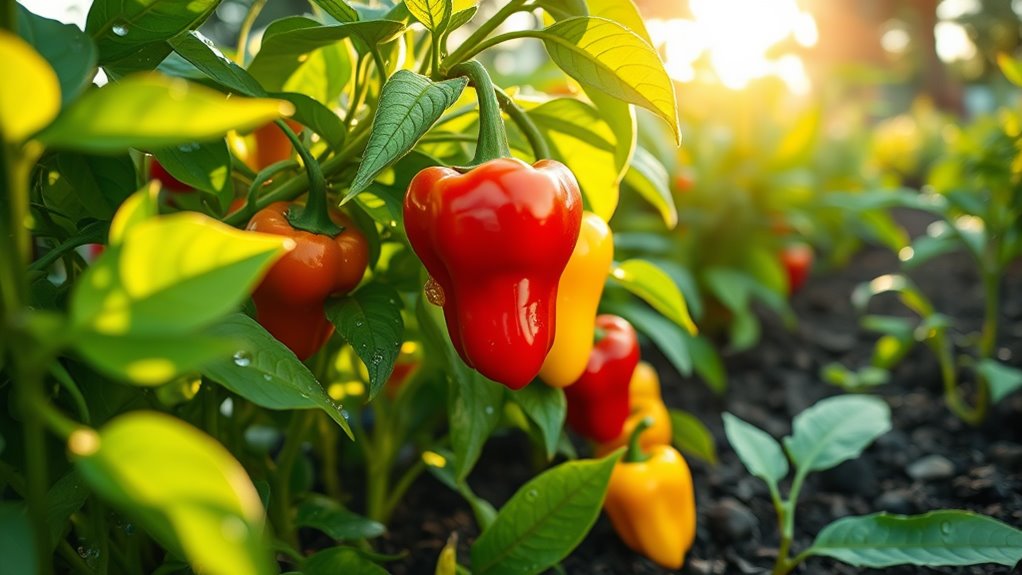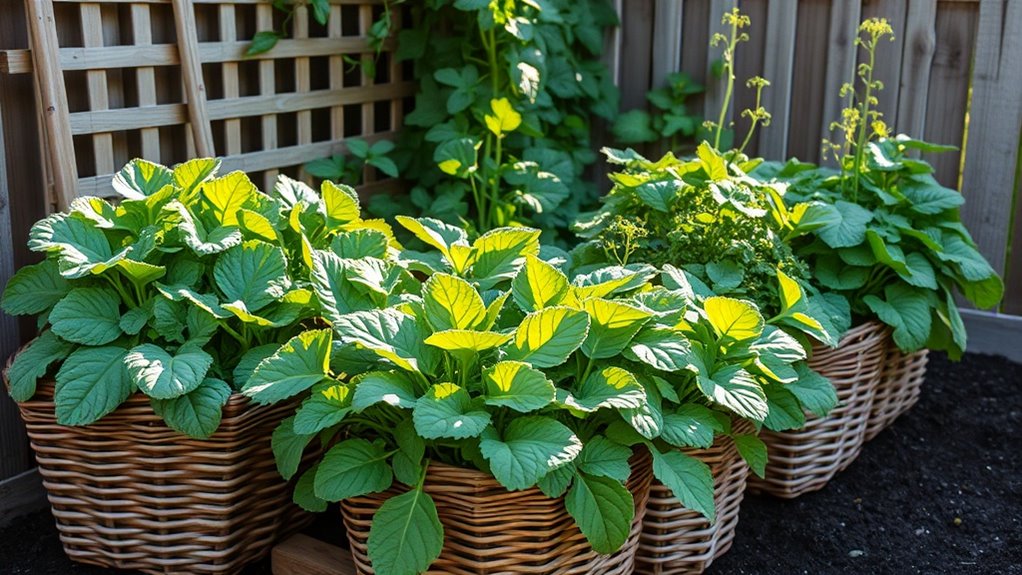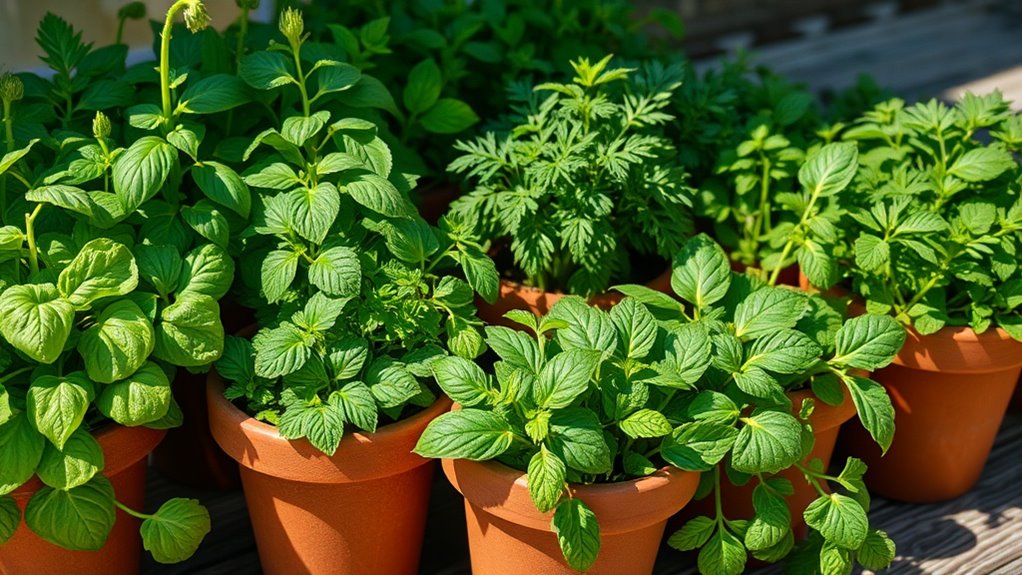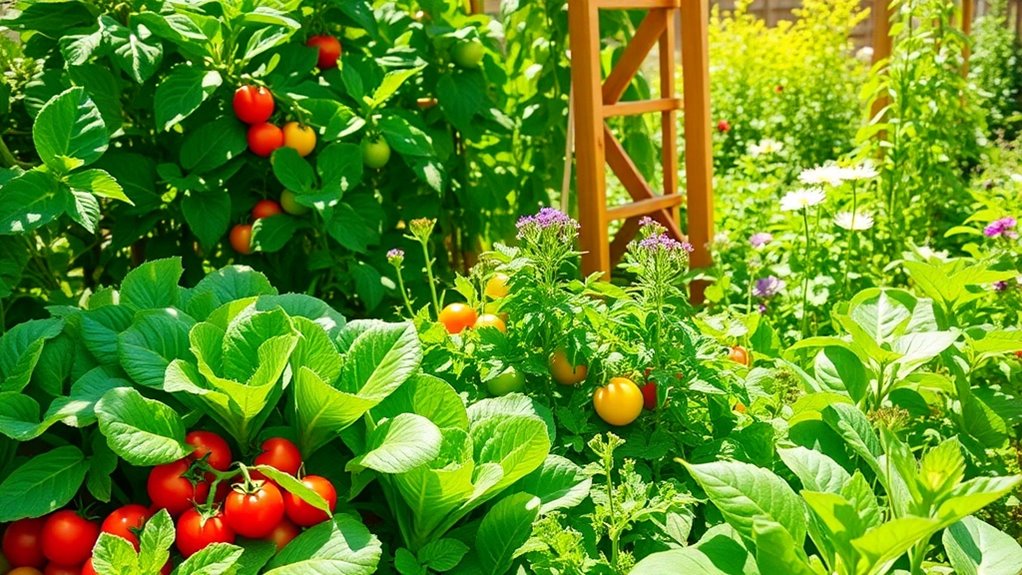The No-Fail Way to Grow Juicy Peppers at Home
Growing juicy peppers at home can feel like crafting a fine dish—every ingredient matters. Just like a chef selects the perfect spices, choosing the right pepper varieties for your climate can make all the difference. From soil preparation to pest management, each step is crucial for a bountiful harvest. Want to uncover the secrets to achieving that vibrant, succulent flavor? Let’s explore the essential techniques that will ensure your success in pepper cultivation.
Key Takeaways
- Choose the right pepper variety based on your local climate and culinary preferences for optimal growth and flavor.
- Prepare well-drained soil with a pH of 6.0-6.8, incorporating compost for nutrients.
- Start seeds indoors 8-10 weeks before the last frost, and transplant seedlings after hardening off.
- Water consistently, applying a balanced fertilizer every 4-6 weeks, and maintain soil moisture without waterlogging.
- Harvest peppers when they are vibrant and firm, using sharp scissors to avoid damaging the plant.
Choosing the Right Pepper Varieties
When selecting the right pepper varieties for your home garden, how do you determine which types will thrive in your climate and meet your culinary needs?
Start by researching your local climate, as bell peppers prefer warm temperatures and full sun. Consider varieties like California Wonder for cooler areas or Sweet Banana for warmer zones. Assess your culinary preferences; if you enjoy sweetness, stick with bell peppers, while spice seekers might explore jalapeños or habaneros. Lastly, check the days to maturity on seed packets to ensure a successful growing season, tailoring your choices to achieve the best results for your garden. Additionally, be aware that optimal growing conditions such as well-drained soil and consistent watering can significantly impact your pepper yield.
Preparing the Soil for Optimal Growth
To grow juicy peppers, you must start with optimal soil conditions.
First, test the soil pH to ensure it falls between 6.0 and 6.8, as this range promotes nutrient absorption.
Next, enrich the soil with nutrient-rich amendments and focus on achieving proper drainage and aeration to support healthy root development. Additionally, be aware that acidic soil can hinder nutrient uptake, so it’s essential to correct any imbalances.
Soil Ph Testing
How can you ensure your peppers thrive in their soil environment?
Start by testing your soil’s pH, ideally between 6.0 and 6.8 for optimal growth.
Use a pH meter or test kit for accurate results. Collect samples from various spots in your garden to get a representative reading.
If your soil is too acidic, add lime to raise the pH; if it’s too alkaline, incorporate sulfur to lower it. Retest after amendments to confirm adjustments.
Proper pH levels enhance nutrient availability, ensuring your pepper plants receive the essential elements they need to flourish and produce juicy fruits.
Nutrient-Rich Amendments
Nutrient-rich amendments are essential for enhancing soil fertility and promoting robust pepper growth.
To optimize your soil, consider incorporating the following:
- Compost: Adds organic matter and beneficial microorganisms, improving nutrient retention.
- Bone Meal: A great source of phosphorus, it supports root development and flowering.
- Kelp Meal: Supplies essential micronutrients and growth hormones, boosting overall plant health.
- Fish Emulsion: Provides a quick-release nitrogen source, encouraging lush foliage.
Drainage and Aeration
After enriching your soil with nutrient-rich amendments, the next step is ensuring it has proper drainage and aeration. To achieve this, mix in coarse materials like perlite or sand, which prevent compaction and promote airflow.
Test your soil’s drainage by digging a hole, filling it with water, and observing how quickly it drains. Ideally, it should empty within a few hours.
If drainage is slow, consider raised beds to enhance water flow.
Regularly aerating the soil with a garden fork also helps roots access oxygen, crucial for healthy pepper growth.
Always aim for a well-draining, loose soil structure.
Planting Peppers: Timing and Techniques
When planting peppers, timing is crucial for successful growth, so aim for late spring when temperatures consistently exceed 70°F.
You should start seeds indoors about 8-10 weeks before the last frost date, ensuring they’ve ample light and warmth.
Additionally, prepare your soil with organic matter to enhance drainage and nutrient content, setting the stage for robust pepper plants. Companion planting with tomatoes and peppers can also improve overall yield and deter pests, making it a beneficial practice for your garden.
Ideal Planting Time
Have you considered the impact of timing on your pepper yield?
Planting your peppers at the right time can significantly enhance their growth and flavor.
Here are four key timing factors to remember:
- Frost Dates: Wait until all danger of frost has passed, usually late spring.
- Soil Temperature: Aim for a soil temperature of at least 70°F (21°C) for optimal germination.
- Day Length: Longer daylight hours in summer promote healthy growth.
- Plant Age: Transplant seedlings when they’re 6-8 weeks old for best results.
Seed Starting Techniques
How can you ensure your pepper seeds germinate successfully? Start by soaking seeds in water for 24 hours to enhance germination rates.
Use a seedling tray filled with a seed-starting mix, ensuring it’s well-drained. Plant seeds about a quarter-inch deep, spacing them evenly.
Maintain a temperature of 70-85°F for optimal growth; consider using a heat mat if necessary. Keep the soil consistently moist but not soggy, using a spray bottle for gentle watering.
Cover the tray with plastic wrap to retain humidity until germination occurs, typically within 7-14 days. Once seedlings emerge, provide bright, direct light to promote healthy growth.
Soil Preparation Tips
After successfully germinating your pepper seeds, the next step involves preparing the soil for planting.
Quality soil is crucial for robust growth.
Follow these tips:
- Test Soil pH: Aim for a pH between 6.0 and 6.8 for optimal nutrient uptake.
- Add Organic Matter: Incorporate compost or well-rotted manure to enhance fertility and drainage.
- Ensure Proper Drainage: Mix in perlite or sand if your soil retains too much moisture.
- Tilling: Loosen the soil to a depth of at least 12 inches, promoting root development.
Watering and Fertilizing for Maximum Yield
Watering and fertilizing your pepper plants correctly can significantly boost their yield.
Maintain consistent moisture, watering deeply once or twice a week, depending on weather conditions. Aim for soil that’s evenly moist but not waterlogged.
When it comes to fertilizing, opt for a balanced fertilizer with an N-P-K ratio of 5-10-10, applying it every four to six weeks.
As your peppers begin to fruit, switch to a low-nitrogen fertilizer to enhance fruit development.
Always follow package instructions for application rates, and consider side-dressing with compost for added nutrients. This approach ensures your peppers thrive and produce abundantly. Additionally, be mindful that poor watering practices can contribute to issues such as peppers turning black, impacting the overall health of your plants.
Managing Pests and Diseases
Protecting your pepper plants from pests and diseases is crucial for a successful harvest.
To effectively manage these threats, follow these steps:
- Inspect Regularly: Check your plants weekly for signs of pests like aphids or spider mites.
- Use Row Covers: Protect young plants with lightweight fabric to deter insects while allowing sunlight.
- Implement Crop Rotation: Change planting locations annually to reduce soil-borne diseases.
- Apply Organic Treatments: Use neem oil or insecticidal soap as preventive measures against infestations. Additionally, consider making a DIY bug spray using natural ingredients to further safeguard your garden.
Tips for Pruning and Supporting Pepper Plants
Maintaining the health of your pepper plants goes beyond pest management; proper pruning and support can significantly enhance growth and yield.
Start by removing any dead or yellowing leaves to improve air circulation.
Pinch back the tips of young plants to encourage bushier growth.
For larger varieties, stake or cage them to prevent breakage as fruits develop. Use soft ties to avoid damaging stems.
Regularly check for overcrowding and thin out excess branches, allowing light to reach the inner foliage. This practice not only strengthens the plant but also promotes better fruiting. Additionally, overcrowding issues can lead to poor air circulation and increased disease risk, so it’s crucial to manage plant density effectively.
Harvesting and Storing Your Juicy Peppers
When it’s time to harvest your peppers, look for signs of ripeness such as vibrant color and firm texture.
To ensure the best flavor and longevity, follow these steps:
- Use sharp scissors or pruning shears to cut the stem, avoiding damage to the plant.
- Harvest in the morning when temperatures are cooler to maintain freshness.
- Store unwashed peppers in a breathable container in the refrigerator.
- For longer storage, consider freezing or pickling, ensuring they’re properly blanched first.





